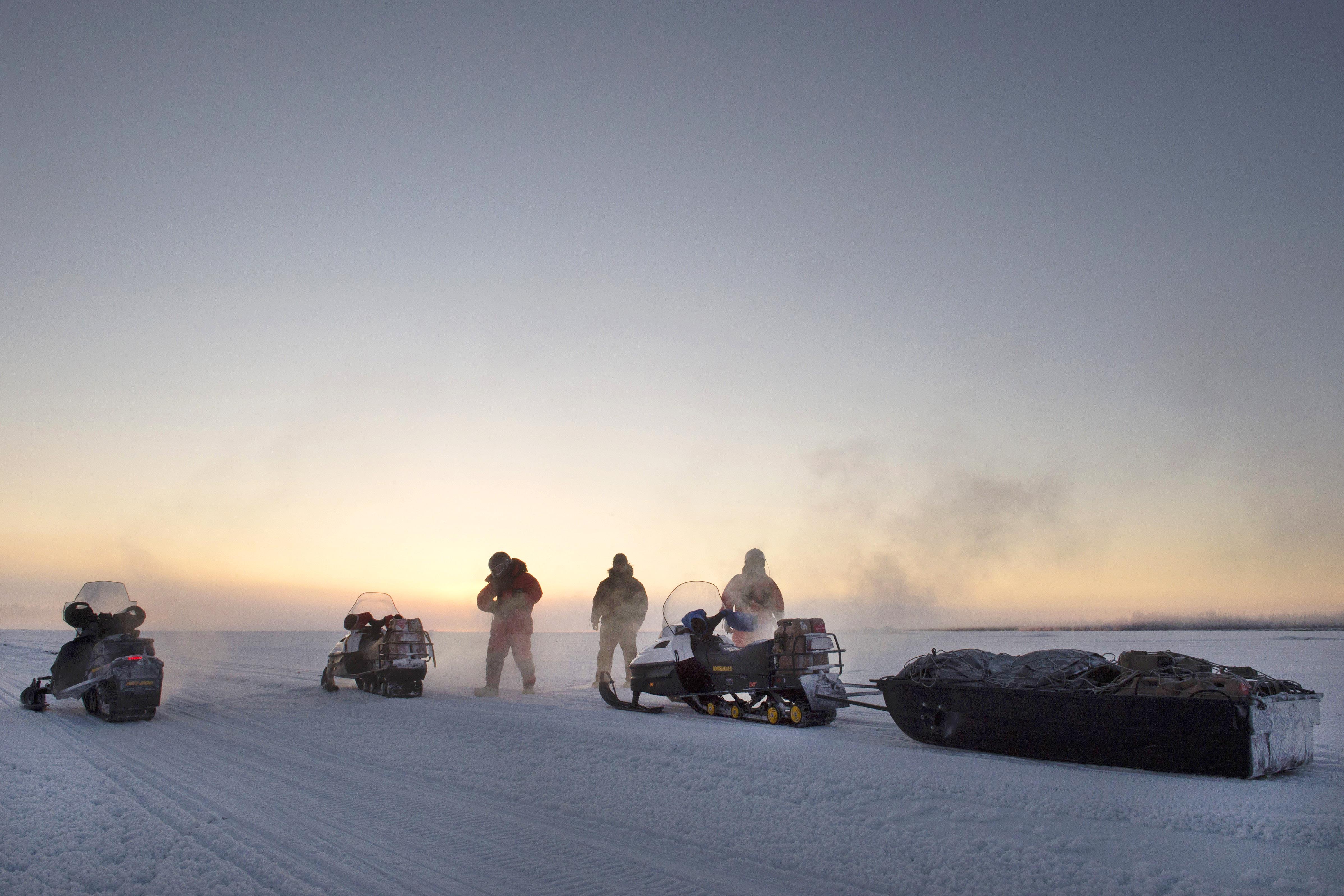How a new project links community members with scientists to monitor Alaska’s river and lake ice
River and lake ice — which are critical for Arctic travel — have been freezing later and thawing earlier. A new project enables local residents to better monitor that ice.

In Alaska, where roads are sparse and where travel over frozen rivers and lakes is common, thin ice can be deadly. So far this season, 10 people have died after falling through river or lake ice and several others have had been rescued.
That adds urgency to a project called “Fresh Eyes on Ice” that is being launched by the University of Alaska Fairbanks. The program combines high-tech ice monitoring such as satellite-based measurements with historical data and on-the-scene citizen scientist observations to create a complete picture of ice conditions in northern, western and interior Alaska.
Those citizen scientists will include teachers and students in 11 Alaska communities. The students will track ice formation and ice loss, taking monthly measurements of ice thickness and snow depth, said Katie Spellman, an educator with UAF’s International Arctic Research Center, one of the project team members. To help accomplish those measurements, the students and teachers will be provided with drones and trained to use them, she said.
About 150 students are expected to participate, “but we anticipate other groups emerging as the program grows,” Spellman said by email.
The project’s goals are wide-ranging. Information collected is expected to be used more broadly to better understand the Arctic freshwater ecosystems.
But the travel-safety issues have brought new attention to the importance of river and lake ice, Spellman said.
She noted that her previous work focused on changes in berry crops, which are important to rural residents who depend on wild food. But the new project addresses a more serious issue, she said.
“No one is dying from changing berries,” she said. “This project, aimed at increasing data access and awareness of changing ice conditions, is a much more urgent need.”
Noatak in northwestern Alaska, one of the villages participating in the project, was the site of one of this year’s fatal travel accidents. On April 15, two adults and an 11-year-old girl died after falling through ice on the Noatak River.
Better communication of ice information is one goal of the Fresh Eyes on Ice project. It includes a social media plan intended to distribute information in a way that is accessible to the public, Spellman said.. In contrast, past programs simply posted data on websites, she said.
The Fresh Eyes On Ice project has funding from the National Science Foundation, and wil incorporate information gathered over three winters by UAF scientists traveling by snowmobile to take measurements in northern, western and interior Alaska.
Already, the measurements are yielding some interesting results. At Teskukpuk Lake, the North Slope’s biggest lake, ice measured over the weekend was only 115 centimeters thick, compared to measurements of 232 and 202 meters taken by U.S. Army scientists during the same seasonal period in the 1970s, said Chris Arp of UAF’s Water and Environmental Research Center. Arp, one of the lead scientists on the Fresh Eyes on Ice project, has been in the field on the North Slope traveling around and taking measurements.
The 115 centimeters at Teshekpuk is the thinnest for this time of year that his group has seen in measurements that date back to 2007, he said by email. What was “most impressive,” he said, was the thick layer of snow atop tundra and lakes — about 40 centimeters atop Teshekpuk’s ice, compared to the 10 centimeters that is typical for this time of year.
The warming northern climate has reduced the ice-travel season and made it more dangerous. In interior Alaska, spring breakup of rivers is occurring, on average, six days earlier than it did in a record that goes back nearly a century, and winter freeze-up — an especially perilous period for travel — has been occurring as much as two days later per decade at some locations, UAF’s Diana Brown and Todd Brinkman found in a study that was published in 2018.
Reduction of freshwater ice seasons has been documented across the Arctic.
Spring breakup is occurring earlier in Canada’s Mackenzie River Delta and on Russia’s Lena, Ob’ and Yenisey rivers, according to one 2016 study that used satellite-based data collected from 2000 to 2014.
Arctic lakes are thawing noticeably earlier, according to a separate study that was done by scientists from Britain’s University of Southampton. That study used satellite-based data for 13,300 sites in Alaska, Canada, Scandinavia and central and eastern Siberia.
Sea ice decline is linked to thinning lake ice in Arctic Alaska, according to a 2016 study that was co-authored by Arp and UAF’s Ben Jones, another leader of the Fresh Eyes on Ice project.